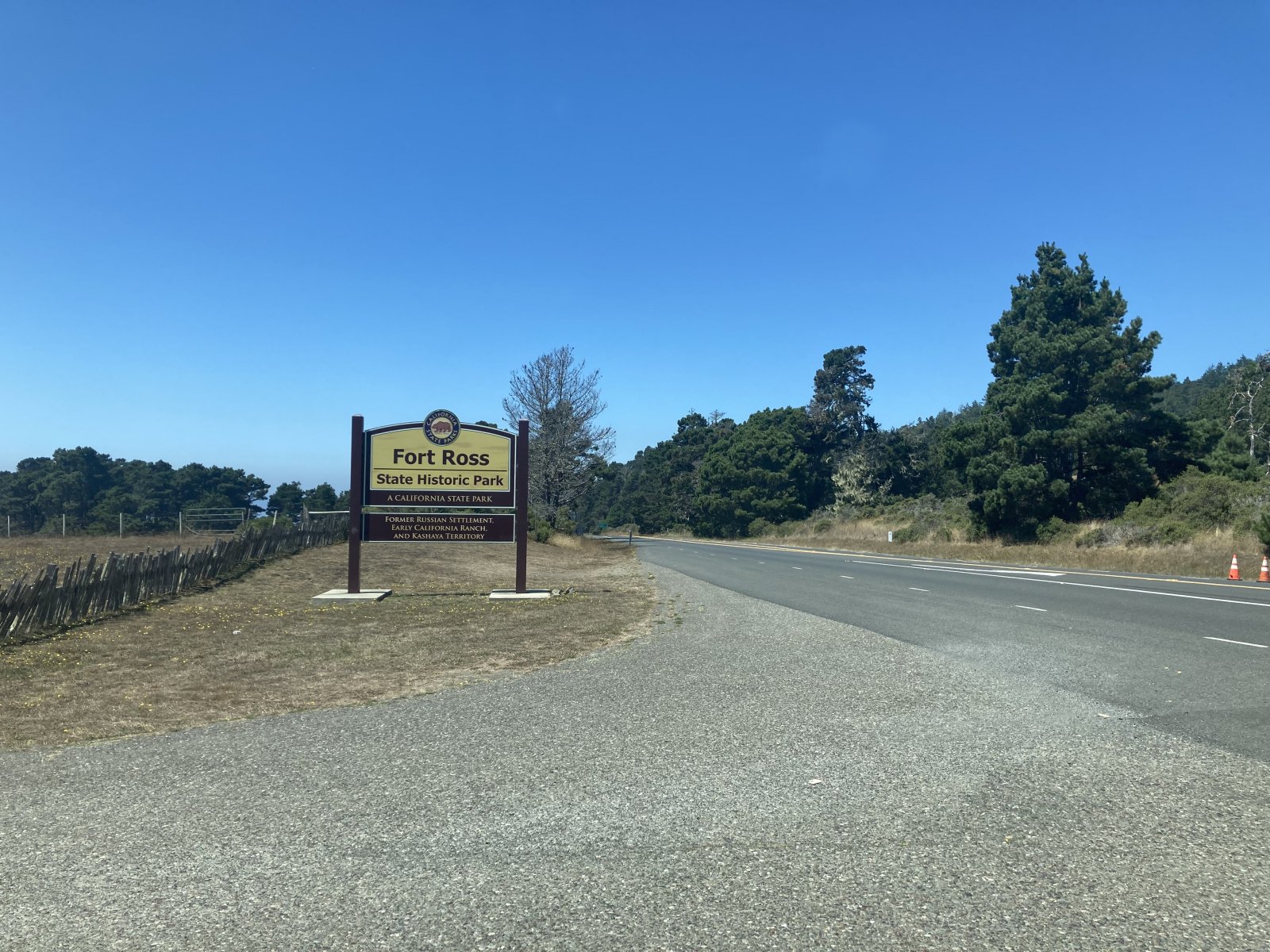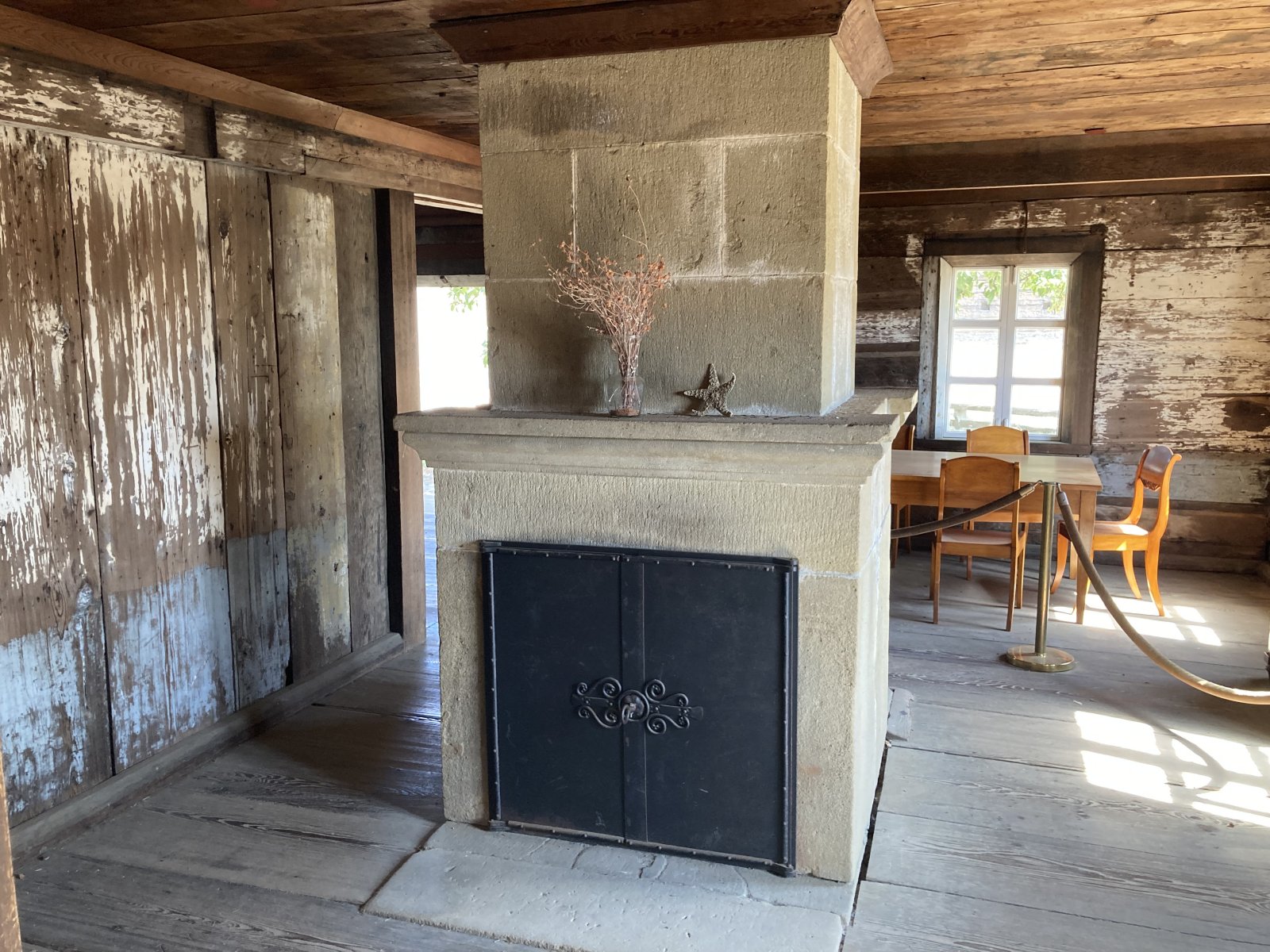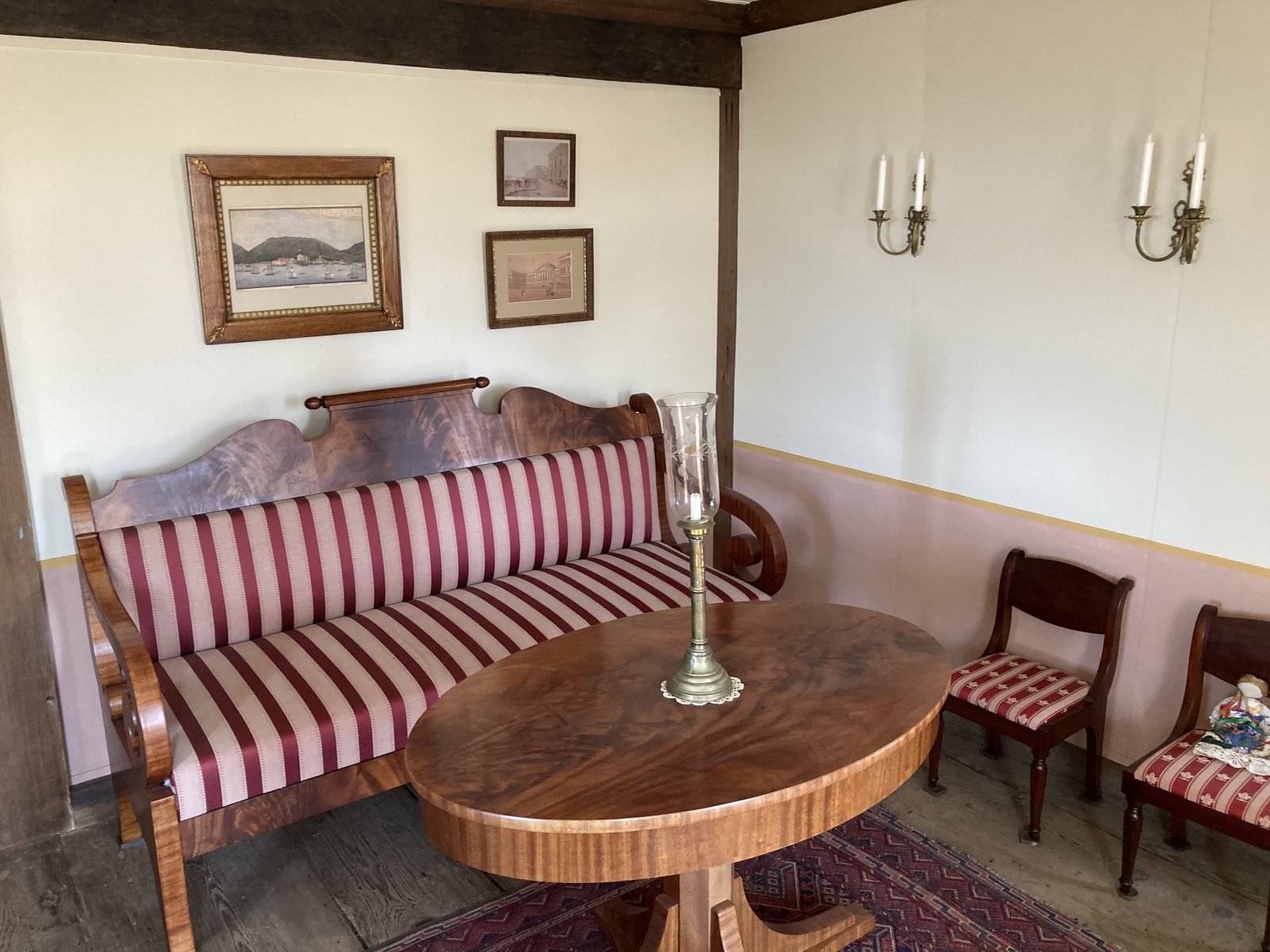August 27, 2023 - NoCali Vacation
Fort Ross



It was only 20 miles from the motel to Fort Ross, but it probably took us an hour and a half to drive the winding roads through the fog. I would learn on this trip that you should double your estimated travel times when driving Highway One in northern California.
The good news was that the fog had cleared up by the time we reached Fort Ross.



Approaching the Fort.
Fort Ross was a Russian-American Company (RAC) settlement between the years 1812 and 1841, on the edge of the Spanish frontier. It was established as an agricultural colony tp support the company's 'settlements in Alaska, and as a base from which to hunt California's sea mammals. In other words, it's purpose was purely to make money. It was not to colonize the North American west coast for mother Russia. As soon as they stopped making money, the Russians sold out and left.
Several families later used the land for ranching, timber production, and as a stage stop.
The fort has been partially restored to its appearance during the Russian occupation.
The Fort Ross State Historic Park was established in 1906.


The big storehouse and/or magazine building.
At far right is one of the two corner blockhouses.

Aleksander G. Rotchev was the last of five RAC administrators, from 1838 to 1841.





Doesn't look like much but only the Administrator and his family lived this well.






Lynnette holding a Sea Otter pelt. Unlike most other marine mammals, the sea otter has no blubber and relies on its exceptionally thick fur to keep warm. With up to 150,000 strands of hair per square centimetre, its fur is the densest of any animal. It was neat feeling the sea otter pelt. Incredibly luxurious. Our tour guide said they used to call sea otter fur "soft gold". A single pelt could be sold in China for $100; an astronomical sum in those days.
Well before the 1849 California Gold Rush, American, English and Russian fur hunters were drawn to Spanish (and then Mexican) California in a California Fur Rush, to exploit its enormous fur resources.
In the early 18th century, Russians began to hunt sea otters in the Kuril Islands and sold them to the Chinese at Kyakhta. Russia was also exploring the far northern Pacific at this time, and sent Vitus Bering to map the Arctic coast and find routes from Siberia to North America. In 1741, on his second North Pacific voyage, Bering was shipwrecked off Bering Island in the Commander Islands, where he and many of his crew died. The surviving crew members, which included naturalist Georg Steller, discovered sea otters on the beaches of the island and spent the winter hunting sea otters and gambling with otter pelts. They returned to Siberia, having killed nearly 1,000 sea otters, and were able to command high prices for the pelts. Thus began what is sometimes called the "Great Hunt", which would continue for another hundred years. The Russians found the sea otter far more valuable than the sable skins that had driven and paid for most of their expansion across Siberia.








Looking across the fort grounds to the Pacific Ocean beyond. The other blockhouse -- eight sided -- is at left.
Most of the inhabitants of Settlement Ross resided outside the fort. Only RAC officials and visitors lived inside. Population of the settlement varied over the years. In 1836 the population consisted of 260 people: 120 Russians, 51 Creoles (people descended from Russians married to Native Alaskins and Californians), 50 Kodiak Aleuts, and 39 babtized Indians.


















Passing by a replica Russian windmill.
Based on the descriptions given by people who visited Fort Ross, it has been concluded that the main windmill, located outside the blockade, was the traditional style Russian stolbovki. The root word "stolb" means thick vertical pole.
What made the Russian mills significant is that they were the first windmills in California. At the time, the only mills in California, which was under Spanish/Mexican rule, were either water or animal powered.
In October 2012 a modern interpretation of one of Fort Ross' windmills was erected and placed near the parking lot and visitors center of the State Historic Park [the one pictured here]. The windmill was built completely by hand, using the same methods that were presumed to have been used in the days of the Russian American settlement. Its pieces were constructed in Russia and shipped to California, where it was fully assembled and now stands as the only working Russian windmill of this style.

We hit the very nice Visitors Center before leaving Fort Ross.
People probably don't realize that while England, France and Spain were exploring and settling the New World to the west, the Russians were exploring and settling new lands to the east.


The sea otter was once abundant -- estimated at 150,000 to 300,000 -- in a wide arc across the North Pacific ocean, from northern Japan to Alaska to Mexico.
The fur trade that began in the 1740s had by 1911 reduced the sea otter's numbers to an estimated 1,000 to 2,000 members in 13 colonies in the most remote and inaccessible parts of its range.
The historic population of California sea otters was estimated at 16,000 before the fur trade decimated the population, leading to their assumed extinction. Today's population of California sea otters are the descendants of a single colony of about 50 sea otters located near Bixby Creek Bridge in March 1938 by Howard G. Sharpe, owner of the nearby Rainbow Lodge on Bixby Bridge in Big Sur.
Sea otters were once numerous in San Francisco Bay. Historical records revealed the Russian-American Company snuck Aleuts into San Francisco Bay multiple times, despite the Spanish capturing or shooting them while hunting sea otters in the estuaries of San Jose, San Mateo, San Bruno and around Angel Island. The founder of Fort Ross, Ivan Kuskov, finding otters scarce on his second voyage to Bodega Bay in 1812, sent a party of Aleuts to San Francisco Bay, where they met another Russian party and an American party, and caught 1,160 sea otters in three months. By 1817, sea otters in the area were practically eliminated
In about two-thirds of its former range, the species is at varying levels of recovery, with high population densities in some areas and threatened populations in others. Sea otters currently have stable populations in parts of the Russian east coast, Alaska, British Columbia, Washington, and California, with reports of recolonizations in Mexico and Japan. Population estimates made between 2004 and 2007 give a worldwide total of approximately 107,000 sea otters.
During the 20th century, sea otter populations recovered from remnant populations in the far east of Russia, western Alaska, and California. Beginning in the 1960s, efforts to translocate sea otters to previously populated areas were also successful in restoring sea otters to other parts of the west coast of North America. Populations in some areas are now thriving, and the recovery of the sea otter is considered one of the greatest successes in marine conservation.
In two important parts of its range, however, sea otter populations have recently declined or have plateaued at depressed levels. In the Aleutian Islands, a massive and unexpected disappearance of sea otters has occurred since the 1980s. The cause of the decline is not known, although the observed pattern of disappearances is consistent with a rise in orca predation. Sea otters give live birth. In the 1990s, California's sea otter population stopped growing for reasons that are probably different from the difficulties facing Alaska's otters.
The sea otter's range is currently discontinuous. It is absent from about a third of its former range, including all of Oregon and northern California, and it has only recently begun to reappear in Mexico and northern Japan. Sea otters can do well in captivity, and are featured in over 40 public aquaria and zoos.
In 1973, the sea otter population in Alaska was estimated at between 100,000 and 125,000 animals. In the 1980s, the population in the Aleutian Islands of western Alaska was home to an estimated 55,000 to 100,000 sea otters, but the population plummeted to around 6,000 animals by 2000. As of 2006, there are an estimated 73,000 sea otters in Alaska.






